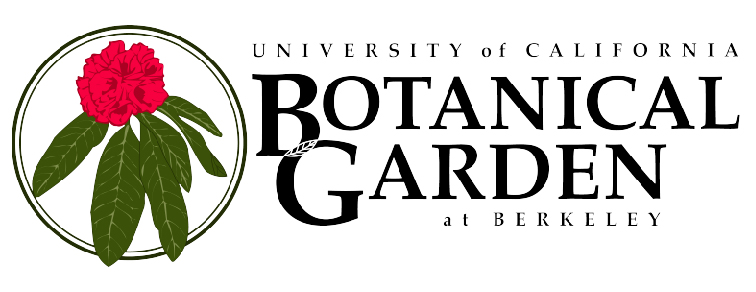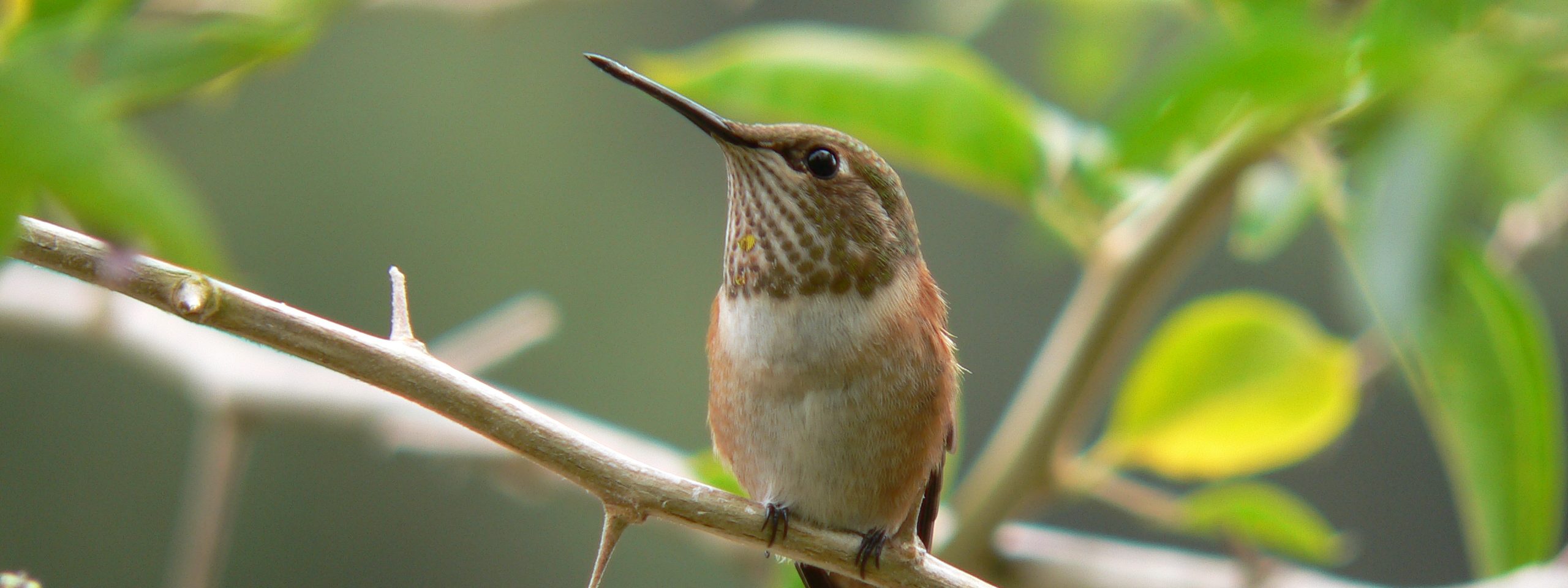Birding Hotspot: UC Botanical Garden
By Phila Rogers and Chris Carmichael
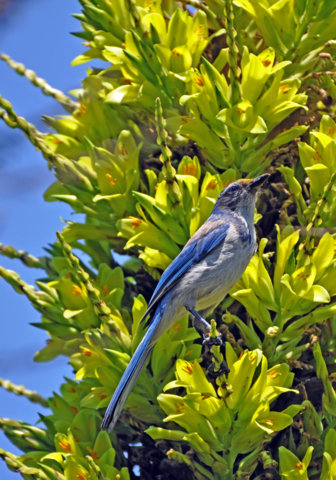
Western Scrub-Jay feeding from blossoms of Puya chilensis in the South American Area by Melanie Hofmann
Strawberry Canyon has it all–a vigorous year-round stream, lush riparian vegetation that follows the stream, and surrounding hillsides with native coastal chaparral and open grasslands.
The U.C. Botanical Garden, located on 36 acres at the upper end of the canyon, features not only the stream and the riparian habitat but extensive collections of plants from around the world.
The Garden, with its shady glens and open hillsides, has attracted birders almost from the time it moved up into the Canyon in 1923 from its original home at the west end of the Berkeley Campus. Its publication, “Birds of the UC Botanical Garden” (click to download), lists 100 species, many of which are year-round residents. Others are seasonal residents, and some are casual visitors.
Every season offers its pleasures. In the winter, the garden is full of wintering sparrows along with Hermit Thrushes, Ruby-crowned Kinglets, and gaudy Red-breasted Sapsuckers. Most winters, Varied Thrushes can be heard and sometimes seen in the denser areas of the Garden.
In the spring, the canyon and the garden resound with glorious songs from breeding singers like Black-headed Grosbeaks, Warbling Vireos, and the Pacific Wren. Partial songs of Fox Sparrows and Hermit Thrushes can be heard briefly before they leave for their summer haunts.
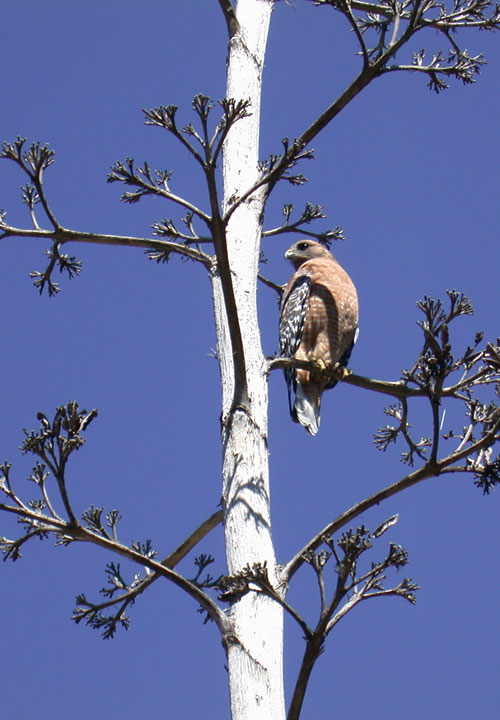
Red-shouldered Hawk perching in a spent agave stalk in the New World Desert
Along with welcoming a steady stream of birding visitors, many with cameras in addition to binoculars, the Garden offers regular walks co-led by Chris Carmichael, retired associate director of horticulture and collections, himself an avid birder.
Even if birding is slow, Chris, with his deep knowledge of plants, has wonderful stories to tell, rich with examples of how the local native birds have adapted to exotic plants.
“Certain plants seem to act as a bird magnet,” Chris explains. “One such plant is the honey bush (Melianthus major) growing in the South African area. The dark maroon blossoms of this plant are favored by nectar feeders such as Hooded Orioles who come to the Garden each spring. But I’ve also seen Ruby-crowned Kinglets, Townsend’s Warblers, Dark-eyed Juncos, Song Sparrows, California and Spotted Towhees, Steller’s Jays, and Black-headed Grosbeaks visiting the melianthus as well.
“The Garden’s rich floral display yields hummingbirds year-round,” continues Chris. “Both Anna’s and Allen’s Hummingbirds are breeders, with Rufous Hummingbirds coming through during migration. The Rufous Hummingbirds have been known to spend the winter, often favoring flowers in the Mexican and Central American Area, including salvias, penstemons, and the vining Peruvian Lily relative, Bomarea.
“Hooded Orioles, who arrive in the spring, nest in the palms in the Cycad and Palm Garden which surround the Conference Center. They generally choose one of the many fan (in contrast with feather) palms. They are clearly adaptable, choosing non-native palms, as our specimens of native Washingtonia filifera are still too small to host nesting orioles.”
Chris points out that: “not surprisingly, certain native bird species favor Garden areas that correspond to their natural habitat. Wrentits, California Thrashers, and Scrub Jays are most commonly seen in the far upper reaches of the Garden, closest to coastal scrub growing outside the fence line. Just within the Garden, the macquis habitat of the Mediterranean Area is sometimes considered to be ecologically comparable to the chaparral habitat of California. Similarly, within the Garden’s collection, Brown Creepers and Hermit and Varied Thrushes are frequently encountered in the densely-wooded parts of the Asian and Eastern North American Areas.”
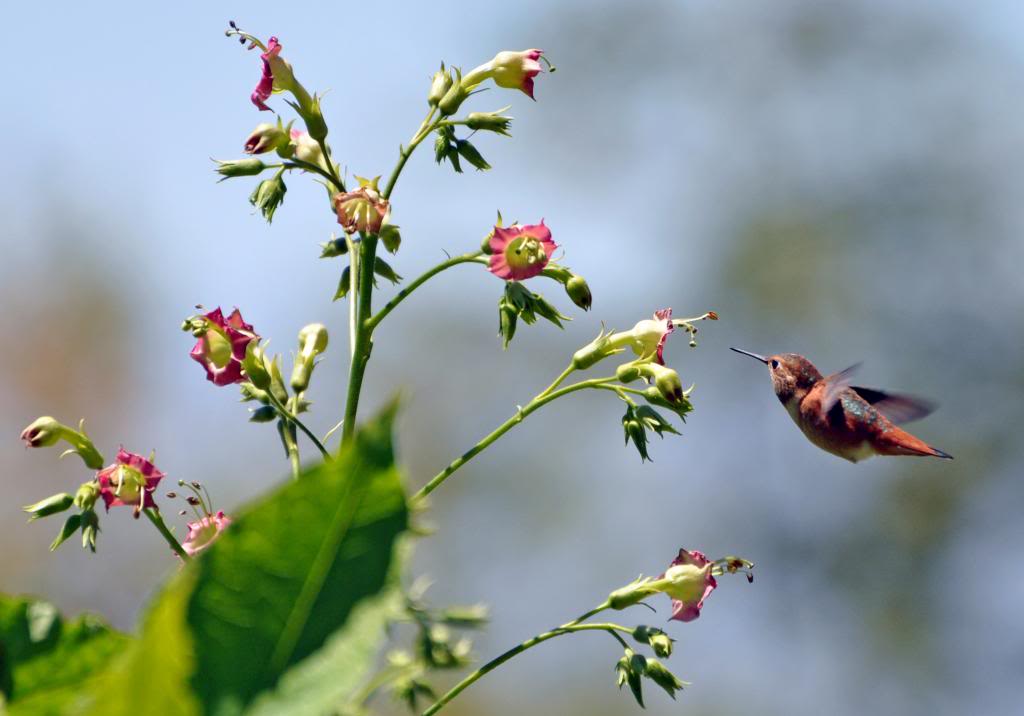
Allen’s Hummingbird feeding on Nicotiana tomentosiformis in the South American Area by Melanie Hofmann
